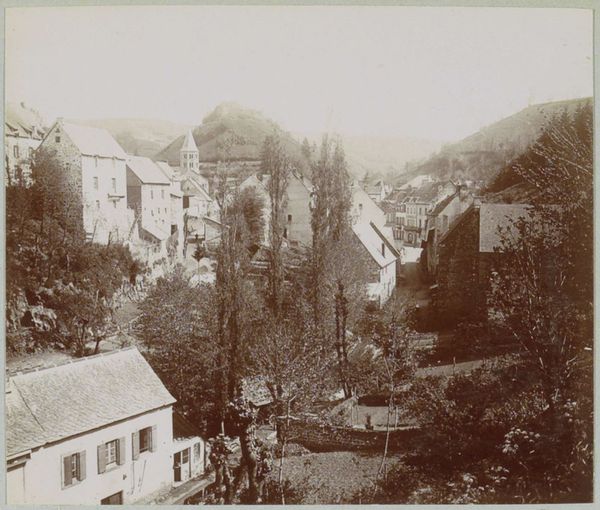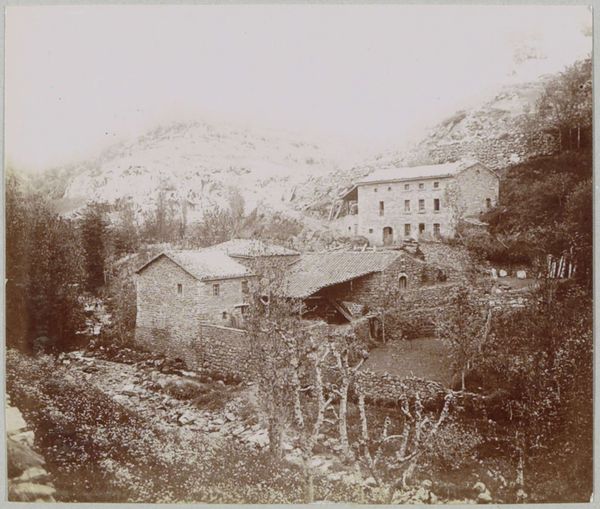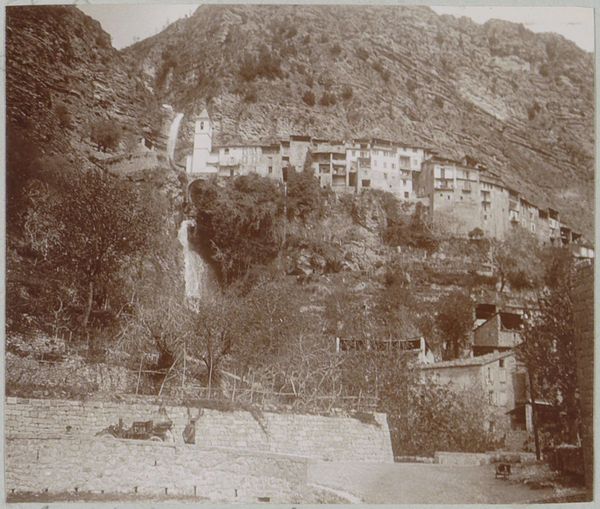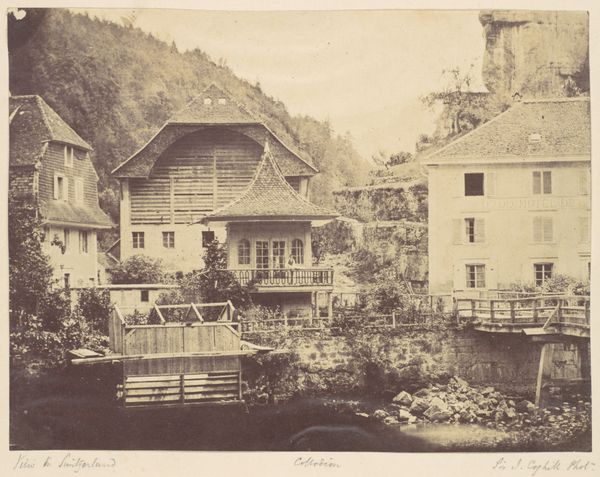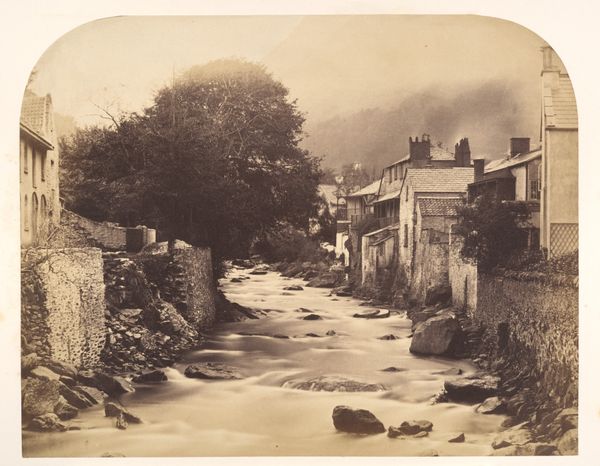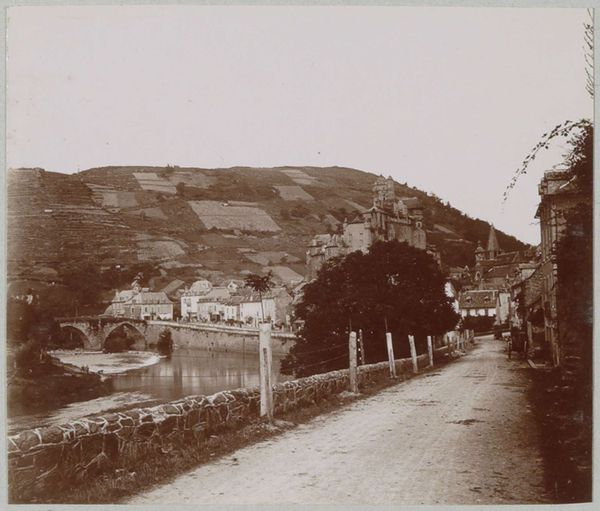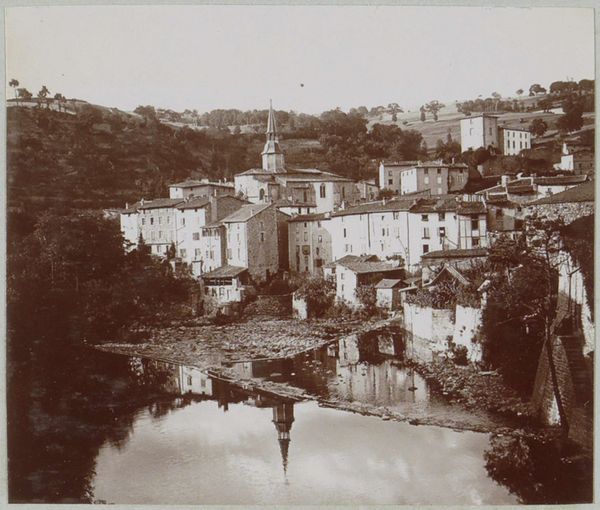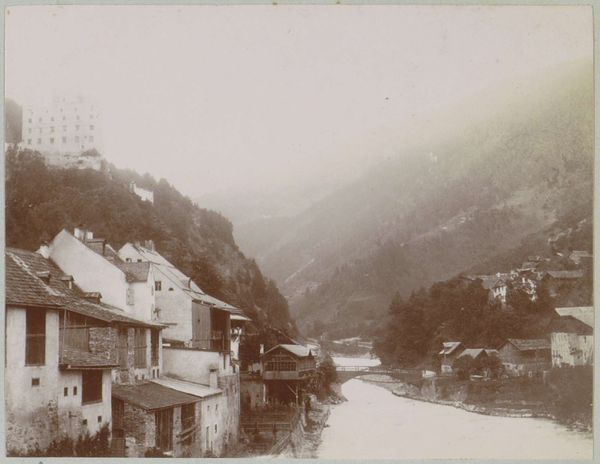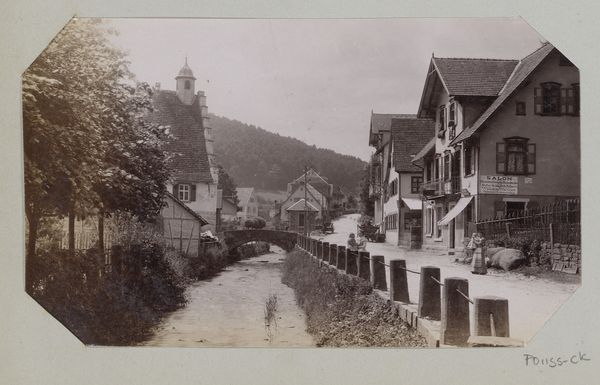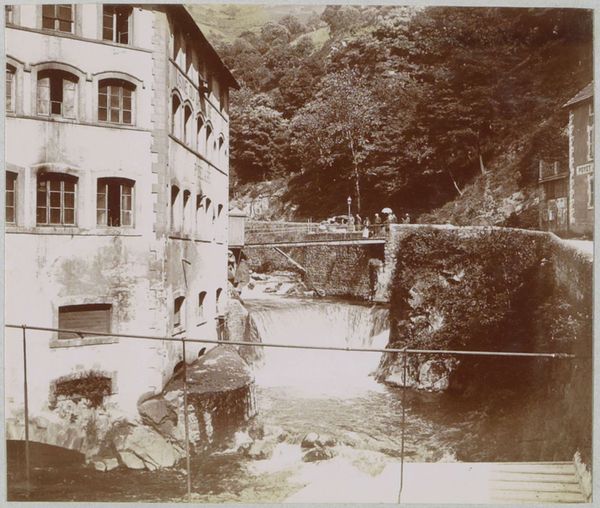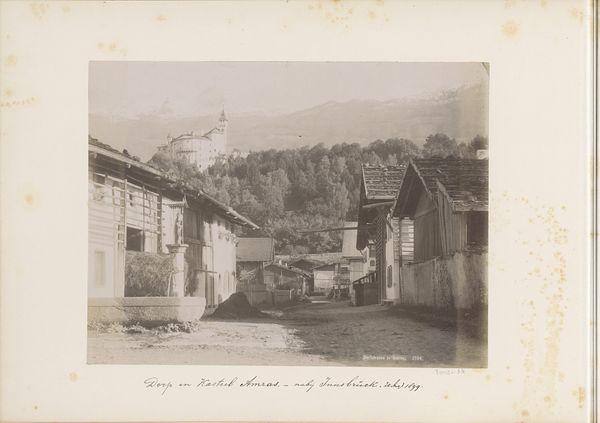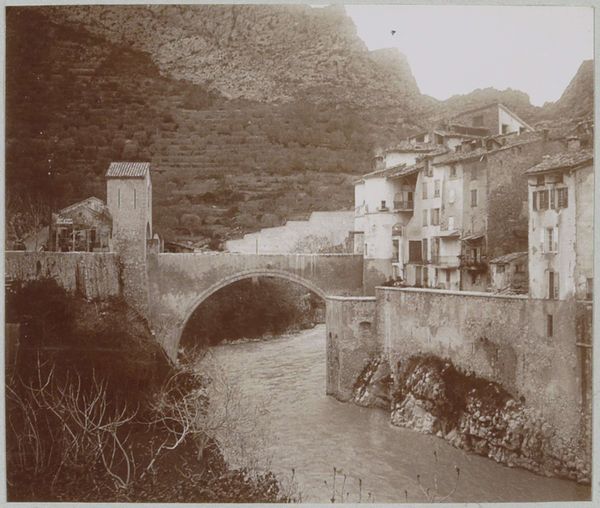
print, photography
# print
#
landscape
#
photography
#
cityscape
Dimensions: 15.6 × 21.3 cm (image); 16.6 × 21.7 cm (paper)
Copyright: Public Domain
Curator: Francis Bedford’s photograph, “Lynmouth, Riverside Cottages,” made sometime between 1860 and 1894, offers a seemingly straightforward depiction of a picturesque village scene. It now resides at The Art Institute of Chicago. Editor: It has such a romantic, almost theatrical feel, doesn't it? Like a stage set from a Victorian melodrama, with those huddled cottages against the backdrop of the wooded hill. The lighting, even in monochrome, is so dramatic! Curator: Consider the collodion process at play here, though. It's not simply a matter of capturing light. There's the careful preparation of the glass plate, the sensitization, exposure, and then the immediate development in the darkroom, often right on location. It suggests a pre-industrial notion of art and labor which predates mass-production techniques, when individual agency remained central. Editor: Right. And isn't the village itself part of that production? Lynmouth was already transforming during Bedford's time, becoming increasingly a site of tourism, a stage set for leisure and the burgeoning middle class. His image reinforces an idyllic vision, obscuring, perhaps, the labor and the changing social structures beneath the surface. I see a commodified image catering to bourgeois notions of taste and accessibility through reproducible formats. Curator: Indeed. And we also have to acknowledge Bedford's commercial interests, in a market of art where reproducibility was still in tension with the older traditions. We should consider also how he marketed these images, whom he sold them to, and how he viewed himself within that economic structure. His labor was directly related to creating images for that social purpose. Editor: That commodification shapes our understanding, right? How were the cottages altered to meet middle class requirements and desires? How did this idyllic presentation change local practices around gender roles or available work and living? Did women and people of color experience this village in a significantly different manner from white, well-to-do Britons? Curator: A fascinating set of questions to pursue! So, in examining this seemingly tranquil photograph, we are not simply admiring its aesthetic qualities but really engaging with complex considerations of 19th-century technology and industrial growth. Editor: Yes, prompting inquiry into questions of consumption, leisure, social position, and even historical visibility! It’s amazing how a single photograph can open such avenues of understanding.
Comments
No comments
Be the first to comment and join the conversation on the ultimate creative platform.

